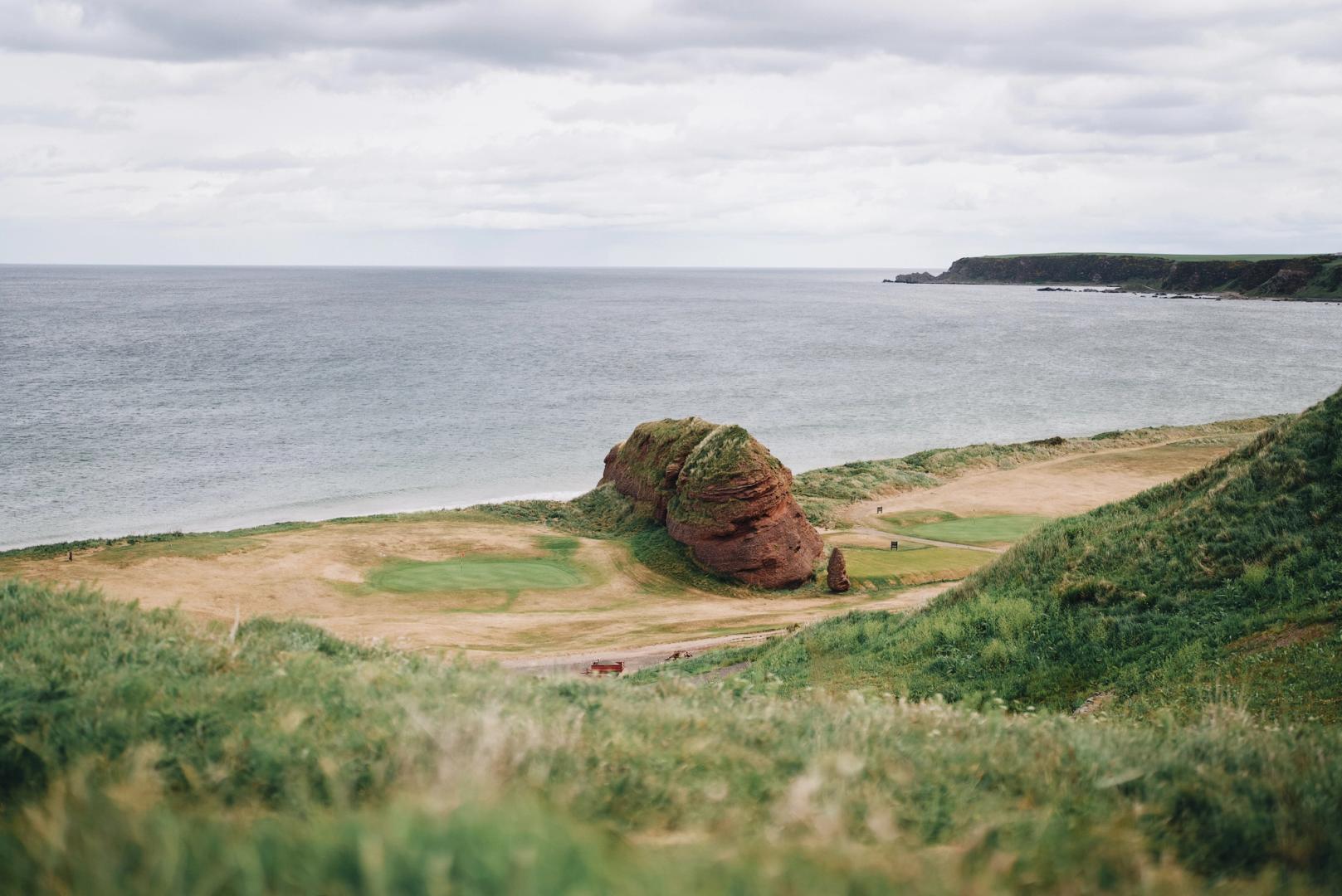
The Ancient Game
Golf likes to call itself the ancient game. Its earliest reference dates back to 1457 when King James banned it because his soldiers were skipping their archery practice. 40 years later, Columbus got lost and stumbled onto the shores of the USA and 4 centuries after that, the so called ‘beautiful game’ (football) was formalised in England. Golf, in comparison, is primordial.
The sport garners its nickname from those 15th century beginnings, but the forces that moulded the golfing arena began their work millions of years earlier.
***
Under the viaduct that leads to Cullen Links, a crumbling car park surrounded by weathered fence posts meets the shores of the Moray Firth. At its far side, a royal blue burger van sizzles in harmony with the crashing waves.
From the portraits that line the clubhouse walls to the copy on the scorecard, Old Tom’s influence here is palpable. It was 1870 when he laid out the initial 9 holes at Cullen, a course that was later expanded to 18 and now boasts the tag line: the shortest true links course in the world.
The bearded architect's navigation of Scotland’s most inhospitable landscapes by rail and steam boat is well documented. But in this arena, awkwardly positioned between Inverness and Aberdeen, his influence comes a distant second to the forces that stretched his canvas.
***
We loosen our muscles in the two washed out practice nets that sigh in the wind next to the first tee. Its an underwhelming start. The opening hole is a flat, featureless 300 yard par 4 with a wide fairway. I’m worried that the dramatic images I’ve seen are a veneer for a course that is more gimmick than greatness.
The second hole takes us inland to the top of the cliff that lines the southerly part of the course. The treasure I’ve read about comes into view. Below us, curious mounds of bright red rock protrude from the turf. Beyond them, a white sand bay sags like a laundry line between the headlands.
The 7th hole plunges us down to the shoreline. Fairways cross each other chaotically, offering a chance to trade trash talking blows with the groups around you. As the back nine begins, we face the interstellar monoliths head on. Three and a half domes of red rock that make up the 400 million year old Cullen Quartzite Formations glow red in the near distance. The first of 4 back to back par 3s throws us into their embrace.
Black and white marker posts and white painted dots are scattered through the sandstone chicane, guiding us to the target that lies beyond. Up close, the rock has a messy texture, small rounded pebbles and fragments of angular stone are lodged unevenly in a smooth sea of red. Layer upon inch thick layer stretch 60 feet in the air like an enormous sliced deli ham. Under the glint from the midday sun, the rocks appear completely incongruous to their surrounding. As if they spontaneously exploded from the turf in an extra terrestrial conjuring. Any moment now, a cloaked crowd of worshippers will start to lap its circumference.
Much of golf’s magic lies in its rich legacy. A sport endorsed by the Kings who once banned it, shaped by a golden age of architects and evolved in tandem with the world’s technological advances.
But golf isn’t the ancient game because it was played in the fifteenth century. It’s ancient because every round is played on landscapes that were forged long before we got here, on fairways shaped by tectonic shifts and green complexes plateaued by ice ages.
We like to think that our new superfast driver and our upgraded slope calculating range finder mean something, but in an amphitheatre of golf created in a time when the fish were climbing from the sea, our never ending battle for birdies takes a welcome backseat.